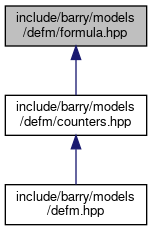|
barry: Your go-to motif accountant
0.0-1
Full enumeration of sample space and fast count of sufficient statistics for binary arrays
|
|
barry: Your go-to motif accountant
0.0-1
Full enumeration of sample space and fast count of sufficient statistics for binary arrays
|

Go to the source code of this file.
Functions | |
| void | defm_motif_parser (std::string formula, std::vector< size_t > &locations, std::vector< bool > &signs, size_t m_order, size_t y_ncol, std::string &covar_name, std::string &vname) |
| Parses a motif formula. More... | |
|
inline |
Parses a motif formula.
This function will take the formula and generate the corresponding input for defm::counter_transition(). Formulas can be specified in the following ways:
The general notation is [0]y[column id]_[row id]. A preceeding zero means that the value of the cell is considered to be zero. The column id goes between 0 and the number of columns in the array - 1 (so it is indexed from 0,) and the row id goes from 0 to m_order.
Intercept effects only involve a single set of curly brackets. Using the 'greater-than' symbol (i.e., '>') is only for transition effects. When specifying intercept effects, users can skip the row_id, e.g., y0_0 is equivalent to y0. If the passed row id is different from the Markov order, i.e., row_id != m_order, then the function returns with an error.
Examples:
"{y0, 0y1}" is equivalent to set a motif with the first element equal to one and the second to zero.Transition effects can be specified using two sets of curly brackets and an greater-than symbol, i.e., {...} > {...}. The first set of brackets, which we call LHS, can only hold row id that are less than m_order.
| formula | |
| locations | |
| signs | |
| m_order | |
| y_ncol |
Definition at line 46 of file formula.hpp.